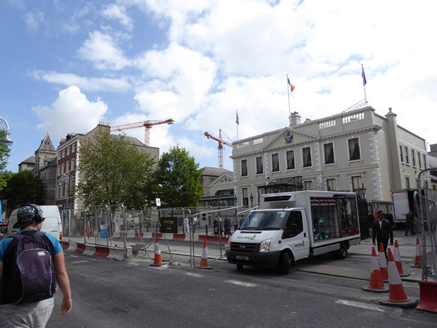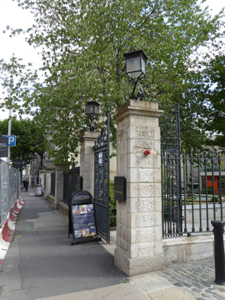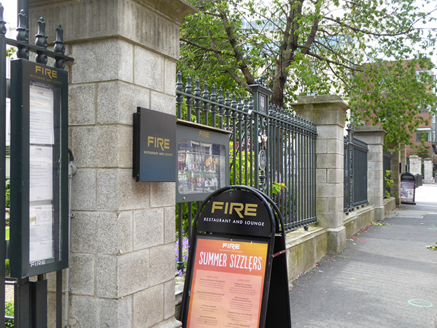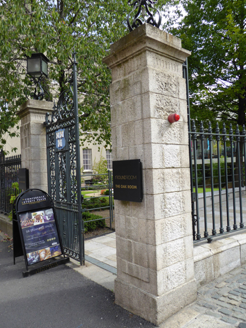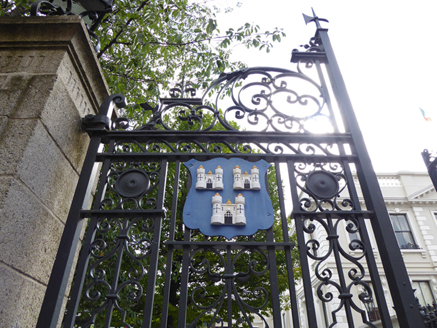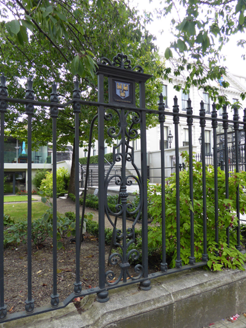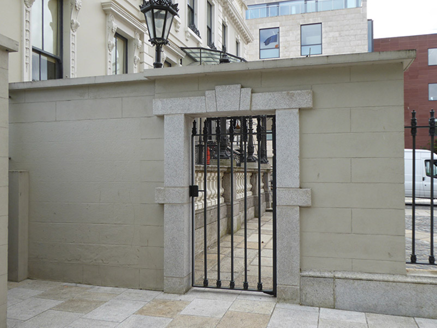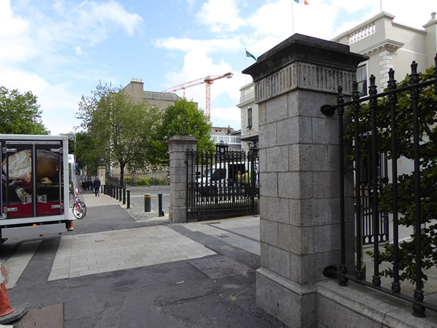Survey Data
Reg No
50100150
Rating
Regional
Categories of Special Interest
Architectural, Artistic
Original Use
Gates/railings/walls
In Use As
Gates/railings/walls
Date
1705 - 1860
Coordinates
316055, 233623
Date Recorded
08/08/2016
Date Updated
--/--/--
Description
Granite, cast-iron and wrought-iron boundary, erected c. 1850, spanning former garden and forecourt of Mansion House. Quadrant cast-iron railings on ashlar granite plinth to forecourt, terminated at Dawson Street by square-section granite gate piers having slightly inset incised frieze, cavetto-corniced cap and blocking stone, topped by wrought-iron lamps. Ornate double-leaf cast-iron gate with Dublin City Council crest to access path leading to Round Room. To left of Mansion House is rendered section of walling of c. 1710 with square-headed pedestrian opening framed by ashlar granite long-and-short surround. Garden to west of Supper Room bounded by cast-iron railings, in sections, divided by shorter ashlar granite piers, with slightly projecting incised frieze, corniced cap and blocking course. Forecourt laid with replacement cobbles.
Appraisal
The Mansion House complex includes the official residence of the Lord Mayor of Dublin, built in 1710 as the home of Joshua Dawson, the nineteenth-century Supper Room and the Round Room. The house is unusual in the context of Georgian Dublin, having been set back from the street-line and fronted by a quadrant forecourt. Brooking's map of 1728 shows this feature, the shape of which is traced by the present gates and railings, but seems likely to have originally been a wall, part of which still exists to the north side of the forecourt, with openings having characteristic early Georgian long-and-short surrounds in ashlar granite. At this time, the area to the north, which currently accommodates a formal garden fronting the Supper Room, was vacant, but is shown as a garden in Rocque's map (1756) and the first edition Ordnance Survey map of 1843. The current boundary features are likely to date from an early period of Victorian improvements and appear to have been restored. They enhance the setting of this important civic complex, and the streetscape of Dawson Street.
